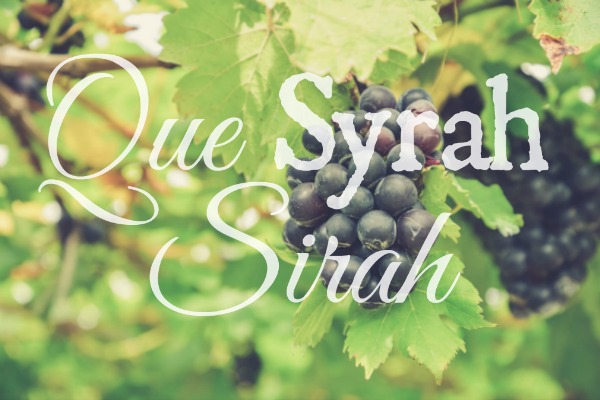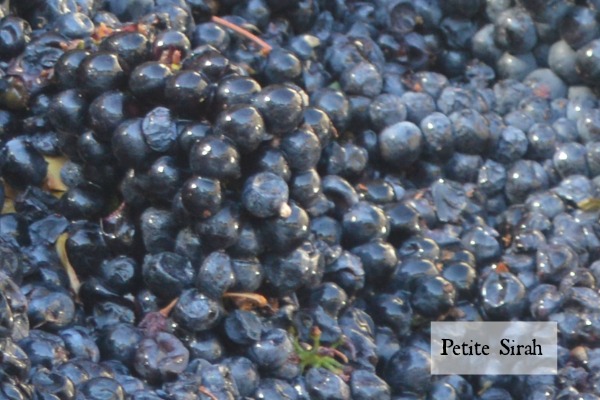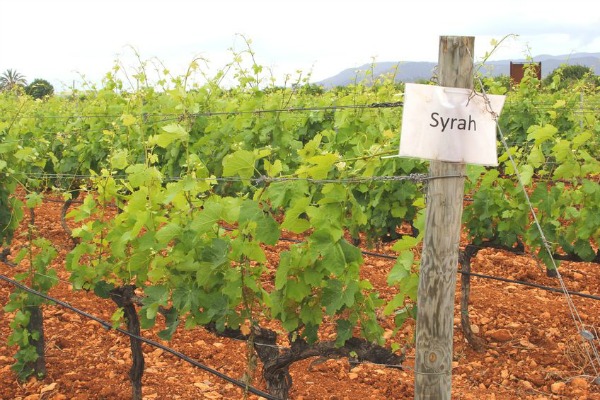
I love to drink Syrah. It reminds me of a time when feathered quills required dipping in inkwells in order to write. I think it is because Syrah is often described as “inky”, a word which comes to mind as I sip and wonder if my lips are becoming stained.
I can easily play out further scenes n my mind when tasting Syrah. I can smell ink on a page, and a leather-bound book underneath. The scents of pipe smoke and cooking meat mix with tar and anise. Ink spills on my hand and I am compelled to taste it. The elixir is tepid and syrupy, but not sweet; it’s redolent of spices, olives, plums. I am transported.
When I snap back to reality after a few seconds, I collect my bearings and move on.

On certain occasions I’ll be in the presence of friends, food, and merriment. Like recently, on a patio with some friends, when the discussion turned to the difference between Syrah and Petite Sirah. A reasonable conclusion from one of my peers was that Petite Sirah actually is Syrah, but with smaller grapes. Not true.
What’s in a name? that which we call a rose
By any other name would smell as sweet
The true difference is that the two are different grape varietals.

In France in the late 1800s, a botanist named Dr. François Durif crossed the rare Peloursin grape with Syrah and named the resulting grape after himself: Durif. Shortly thereafter, it was brought to the United States, specifically California, where it has thrived ever since.
Now that we’ve established the difference in grape, what’s the difference in the wine? With a few changes, you could describe Petite Sirah by painting the same Syrah from my imagination above. Instead of the aroma of cooking meat, insert baking chocolate. For olive and plum, substitute black pepper and blueberry.
The grapes themselves are a bit darker, so the wines may appear more purplish in color. They generally have higher alcohol content, more tannins, and less acidity. Petite Sirah is often added to wine blends to create complexity, and is a minor varietal of the world with only approximately 10,000 acres planted.

Syrah is also widely blended (over 450,000 acres worldwide), especially in its native Rhône Valley of France. In the north it’s combined with white grapes such as Viognier, Marsanne, and Roussanne; in the southern region, it’s one of the thirteen varietals that goes into the famous blended wine of Châteauneuf-du-Pape.
In Australia, where Syrah is the top varietal planted, it’s known as Shiraz — an homage to the (false) legend that the grape originated in an ancient Persian city of the same name. This Australian style is both a stand-alone grape made into red wines and rosés and sparkling wines, as well as a blend with other red and white varietals.
In a much smaller context, Petite Sirah has also made a name for itself in down under, specifically in Rutherglen, which is in the southern state of Victoria.
So as you can see, although the two Sy(i)rahs of the wine world are demonstrably different, they weave a similar pattern of style and location, complementing each other on the journey from vine to wine.
And what a delicious journey it is.


Leave a Reply